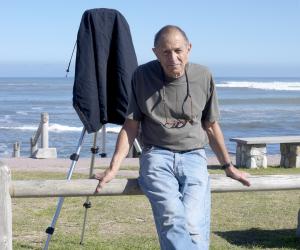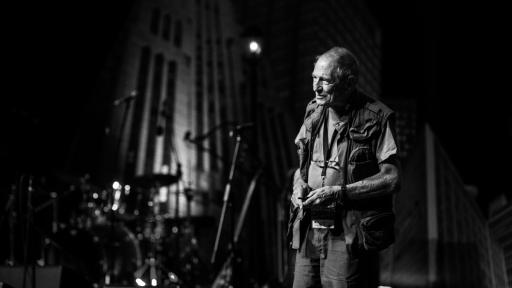At Design Indaba Conference 2014, David Goldblatt took the audience through 20 of his photos taken over almost 50 years, from commissions such as portraits of former Presidents PW Botha and Nelson Mandela to his personal work. In a moving presentation that elicited a standing ovation from the audience, he shared the stories behind the experiences, people and places that he captured.
The first image Goldblatt shares in his talk is that of the commando of National Party stalwarts, which escorted Prime Minister and National Party leader Hendrik Verwoerd and his wife Betsie to the party's 50th anniversary celebrations at De Wildt in the old Transvaal. The photo was taken in October 1964 and shows, among others, Leon Wessels, who went on to become a Deputy Minister of Justice in the National Party cabinet.
According to Goldblatt, Wessels was the first senior Nationalist to apologise for Apartheid and today works as a human rights lawyer.
The obvious is not necessarily the obvious, says Goldblatt.
During Apartheid, Goldblatt was interested in photographing people who were held in detention and tortured by the police. But as was typical of the era, information was censored and controlled by the police and so due to the secrecy his access was limited.
He shows the image of a young 15-year-old man, Lawrence Matjee, after his assault and detention by the security police. The photo was taken in 1985 at Khotso House, the headquarters of the South African Council of Churches (SACC) in De Villiers Street, Johannesburg. Khotso House was bombed three years later for harbouring anti-apartheid groups.
“I felt, in him, a kind of compassion,” he recalls of the young man. “There was no hate.”
A particular passion of Goldblatt is the physicality of people and in 1975 he embarked on a series that became, he says, obsessional for about six months.
“The physicality of people impressed me deeply," he says. “Their limbs and the way they held themselves. I was obsessed with parts of people’s bodies. And I took these photographs thinking when I began them, that they would for once be something lyrical I could do. That it would be an expression of my own sensuality and sexuality and my interest in people but inevitably, without ever meaning to or looking for it, [the photos] also had political overtones."
He goes on to show several portraits of people he had photographed during this period, including a one-eyed house painter at home in Hillbrow, a photo of the soft fold of flesh on the thigh of a woman smoking and the intertwined hands of a man sleeping in Joubert Park wrapped protectively around his head.









